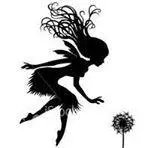For an English review pleas scroll down.
זה לא הספר הראשון שהסופרת פירסמה. זה גם לא הספר הראשון שלה שאני קוראת. למעשה זה הספר השלישי שהיא פירסמה, והספר השלישי שאני קוראת. כמה מפתיע שהמגמה שהסתמנה בספר השני, התחזקה בשלישי כך שאני צריכה להסיק את המסקנות לעתיד ואם היא תוציא את הספר הרביעי פשוט לא לקרוא אותו.
כבר בספרים הקודמים שקראתי הבחנתי בסיגנון הכתיבה שהוא סוג של מישמש שנע בין ספר מתח, צ'יק ליט ורומנטיקה משולבת עם הומור. כבר בספר הקודם כתבתי שאני לא אוהבת ספרים שמזגזגים ולא מחליטים מה הם. במיוחד אם הסופר הוא לא מרישה פסל. בספר "איפה את בקיץ" התכונה הזו החריפה ובולטת לרעה.
הגיבורה, זוהרה, מוכרת בחנות ספרים יד שניה וגרושה יד ראשונה, בגיל 40 עדין מחפשת את עצמה. אין לה בן זוג, יש לה הכנסה מצומצמת שבקושי מאפשרת לה לשלם את החשבונות ושכר הדירה והיא מומחית ביצירת סנדוויצ'ים מהחלומות. בזמן שאפשר להבין את זוהרה, הדמות שלה מצטיירת כפלקטית ודיי משעממת.
זוהרה, אומנם מנהלת שיחות עומק עם חברתה הקרובה, יערה, עורכת דין מצליחה אך מתוסכלת מינית ועם אנה, ילדה בגיל העשרה שמגיעה לחנות לקרוא ספרים יד שניה במקום ללכת לקייטנה (בכל מקרה איזה ילד בן עשרה הולך היום לקייטנה אין לי מושג – כבר בתקופתי גיל 9 היה גבולי מאוד) אבל חייה לא מתקדמים או מקבלים צורה.
גם הזן-גורו תמרה לא הצליחה לעזור לזוהרה, והיא משייטת בחייה בתקווה שמשהו יקרה. או לא יקרה.
הספר נפתח בתיאור גסיסה של השכן מהקומה הראשונה בבניין שבו מתגוררת זוהרה. עד מהרה תיאורי הגסיסה של השכן, מפנים את מקומם לתיאורי הגסיסה של מערכות היחסים של הנשים השונות בספר. למרות שלא ברור מה קרה עם השכן ולא ברור תפקידו של הפרק הזה, בסוף הקורא מבין שכנראה השכן מת, כי הסופרת טורחת לתאר את ריחות הצחנה שאופפים את הבינין. כאשר הריחות הרעים בבניין גוברים בצורה חשודה, זוהרה מאחדת כוחות עם שכנותיה ליאה ושרונה לפתור את תעלומת הריח הרע, רק בכדי למצוא את גופת השכן.
וכך הספר נע בין תעלומת רצח שעוסקת ב- מי הרג את השכן? כאילו שזה מעניין מי פטר את העולם מהדמות הזו שמסתבר שהיתה אלימה, מאיימת ועוד כמה תיאורים לא מחמיאים ממש חלאת האדם. ובין רומאנים רומנטיים של השכנות זוהרה, ליה ושרונה ובכדי שלא נשתעמם הסופרת מוסיפה לנו גם את יערה.
ובשתי החזיתות הוא פשוט לא טוב, לא תעלומת הרצח ולא מערכות היחסים הרומנטיות של הדמויות הנשיות השונות. אפילו הניסיונות הקלושים להעיר את העלילה עם החוקרת, אילנית מלאכי, שהסנדוויצ'ים שלה הם משל לתחכום המסתתר תחת פשטות בנאלית, לא צולחים. הם סתם מעצבנים.
ובין לבין, כקטעי קישור ומעבר, שממה, שיממון והירהורים ריקניים ומיותרים על החיים, על מערכות יחסים ועל זוגיות.
הדמות המעניינת ביותר בספר היא הגורו תמרה, שנעה במומחיות בין תחומי העיסוק השונים שלה ואת העקרונות לאורח חיים תזונתי בריא מיישמת גם על מערכות היחסים בין גברים לנשים.
נכון, הספר זכה לתשואות המבקרים הספרותיים באמירות כמו קליל, משגע, מענג. אחד מהם אפילו, אבוי ושומו שמיים, השווה אותו לפינלי דונובן מחסלת (ספויילר – הוא ממש לא. אל קוזימנו היא אמנית הסיטואציות. ההומור שלה ייחודי ובולט והיא מייצרת דמויות בלתי נשכחות כמו פיליקס ז'ירוב, המאפיונר הרוסי). נכון, גם הקוראים אהבו אותו. אני, לא מצאתי בו את כל אלה.
שני הכוכבים שהענקתי לו הם אות ושיר פרידה. אני לא חושבת שאשקיע בקריאת הספר הבא.
איפה את בקיץ / נטע חוטר
הוצאת תכלת, 2024, 304 עמודים
דירוג SIVI –
איכות אודיו –

This is not the author's first published book, nor my first time reading her work. This is her third book, the third one I have read. While I noticed a trend in her second book that has intensified in this third installment, I still hope for her future works.
In the previous books I read, I noticed the writing style was a mishmash of thriller, chick lit, and romance combined with humor. While I usually enjoy books that have a clear genre, this unique blend intrigued me. However, in the book "Where Are You in the Summer?" this feature is acute and stands out negatively.
The heroine, Zohra, is a seller in a second-hand bookstore and a first-hand divorcee. At the age of 40, she is still looking for herself. She does not have a partner, and her limited income barely allows her to pay the bills and the rent. She is also an expert in making dream sandwiches. While relatable in some aspects, Zohra's character is flat and uninteresting.
Zohra indeed conducts deep conversations with her close friend, Yaara, a successful but sexually frustrated lawyer, and with Anna, a teenage girl who comes to the store to read second-hand books instead of going to summer camp (in any case, I have no idea which ten-year-old boy goes to summer camp today—already at my age it was very borderline). Still, her life is not progressing or taking shape.
The zen guru Tamara was also unable to help Zohara, and she navigates her life in the hope that something will happen—Or not happen.
The book opens with a description of the death of the neighbor on the first floor of the building where Zohra lives. Soon, the descriptions of the neighbor's dying give way to the descriptions of the dying of the relationships of the various women in the book. Although it is unclear what happened to the neighbor, and the role of this chapter is ambiguous, in the end, the reader realizes that the neighbor is probably dead because the author bothers describing the stench surrounding the building. When the bad smells in the building grow suspicious, Zohra joins forces with her neighbors Leah and Sharona to solve the mystery of the foul smell, only to find the neighbor's body.
The book presents a murder mystery: Who killed the neighbor? It poses the intriguing question of who removed this character from the world, especially since he is revealed to have been violent, threatening, and described in unflattering terms. The author also weaves in the romantic relationships of the neighbors—Zohra, Lia, and Sharona—adding layers to the mystery and keeping the story engaging.
The story falters on both counts: the murder mystery and the romantic relationships of the various female characters. The attempts to revitalize the plot with the detective, Ilanit Malachi, whose sandwiches symbolize sophistication concealed beneath a veneer of simplicity, ultimately fall flat. They come across as irritating, and seeing the plot's potential go unfulfilled is disappointing.
In between, as connecting and transitional sections, there are desolation, waste, and empty, unnecessary reflections on life and relationships. These sections, instead of adding depth or insight, feel like filler content that detracts from the main narrative.
The most intriguing character in the book is Guru Tamara, who skillfully navigates her various fields of expertise and applies the principles of a healthy nutritional lifestyle to the dynamics between men and women.
Literary critics praised the book, describing it as light and delightful. One critic even, unfortunately, compared the book to Finley Donovan (spoiler alert: it isn't). El Cosimano is a master of situational humor. Her wit is unique and striking, and she creates unforgettable characters, such as Felix Zhirov, the Russian mobster. While readers loved the book, I did not find the same appeal in it.
The two stars I gave him are a letter and a farewell song. I will not invest in reading the next book.xt book.
לגלות עוד מהאתר Sivi's Books
Subscribe to get the latest posts sent to your email.

